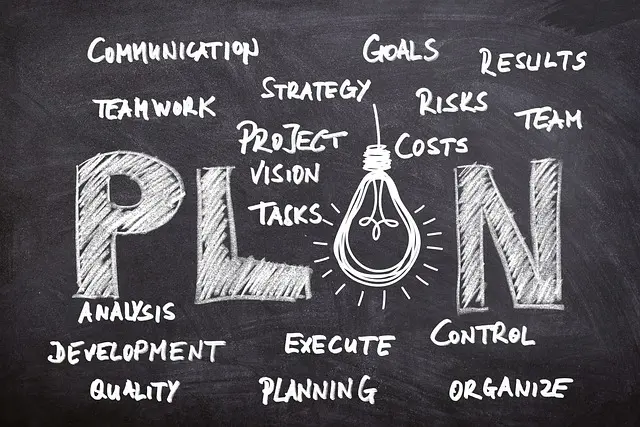
The Opening Hook
The opening hook of an article is the crucial first impression that grabs the reader’s attention and entices them to continue reading. It serves as the initial gateway into the content and sets the tone for the rest of the piece. Whether through a thought-provoking question, a startling statistic, or a captivating anecdote, the opening hook should intrigue the reader and make them curious about what lies ahead.
One effective way to create a compelling opening hook is by appealing to the reader’s emotions. By tapping into their feelings and stirring their curiosity, you can establish a connection and capture their interest from the very beginning. For example, consider a travel article that opens with a vivid description of an idyllic beach paradise, enticing the reader with phrases like “crystal-clear waters” and “palm-fringed sands.” This imagery not only transports the reader to a different world but also ignites a desire to explore and experience such a picturesque destination themselves. By creating an emotional connection, the opening hook encourages the reader to delve deeper into the article and discover what awaits them.
Providing Context and Background Information
The context and background information of a topic are crucial for readers to fully understand and engage with an article. In order to provide a comprehensive overview, it is important to offer relevant details and historical context. This helps to set the stage and establish the foundation upon which the article will build its arguments. By including information such as key events, dates, or historical figures, the reader gains a more informed perspective and can better grasp the significance of the topic at hand.
Additionally, providing background information allows the writer to establish their credibility and expertise in the subject matter. By demonstrating a thorough understanding of the topic’s history and evolution, the writer positions themselves as knowledgeable authorities. This not only enhances the article’s overall credibility, but also establishes trust with the reader. As a result, the reader is more likely to be receptive to the arguments and perspectives presented in the article.
Presenting the Thesis Statement
When it comes to writing an effective article, one of the key elements is presenting a strong and clear thesis statement. The thesis statement serves as a roadmap for the entire piece, highlighting the main argument or point that will be discussed. It is essential to present the thesis statement early on in the article to give readers a clear understanding of what to expect.
In order to craft a compelling thesis statement, it is important to keep it focused and concise. It should clearly state the main idea or argument and provide a sense of direction for the rest of the article. By presenting a well-defined thesis statement, writers can engage readers and guide them through their thought process, making it easier for readers to follow along and understand the main points being made.
When presenting the thesis statement, writers should strive to grab the readers’ attention and make them curious about the topic. This can be done by including keywords that resonate with the target audience and capture their interest. By doing so, writers can ensure that their thesis statement not only sets the tone for the rest of the article but also piques readers’ curiosity and motivates them to continue reading.
Developing the Main Body
Developing the main body of an article is essential for presenting a cohesive and well-structured argument. It serves as the backbone of the article, providing in-depth analysis and evidence to support the thesis statement. Each paragraph within the main body should focus on a specific aspect of the topic, ensuring a logical progression of ideas.
One crucial component of developing the main body is the use of topic sentences. These sentences act as a guide, introducing the main point of each paragraph and setting the stage for the subsequent discussion. They help to maintain clarity and coherence by informing the reader of what to expect in each section.
Supporting evidence and examples are also vital in the main body. These elements reinforce the arguments made and provide concrete proof to validate the author’s claims. By incorporating relevant data, statistics, or expert opinions, the author can enhance the persuasiveness of their article and establish credibility.
Additionally, it is important to acknowledge counterarguments and provide thoughtful rebuttals. By addressing differing viewpoints or potential criticisms, the author demonstrates a thorough understanding of the topic and strengthens their position.
Overall, the main body of an article is where the argument comes to life. Through careful organization, the inclusion of topic sentences, supporting evidence, and nuanced counterarguments, the author can present a compelling case. This section allows readers to delve deeper into the topic, consider different perspectives, and ultimately form their own informed opinions.
Topic Sentences: Guiding the Reader
In academic writing, topic sentences play a crucial role in guiding the reader through the main body of the essay or article. These sentences act as signposts, leading the reader from one paragraph to the next, and helping to maintain a clear and logical flow of ideas. A topic sentence is usually found at the beginning of each paragraph and acts as a preview for the information that will be presented.
The purpose of a topic sentence is twofold. Firstly, it informs the reader about the main idea or point that will be discussed in the paragraph. By providing a clear topic sentence, the writer ensures that the reader knows what to expect and can easily follow the train of thought. Secondly, the topic sentence helps to maintain coherence and unity within the writing. It serves as a link between the previous paragraph and the current one, creating a smooth transition and avoiding any abrupt shifts in content or focus.
When crafting topic sentences, it is important to ensure that they are concise, specific, and relevant to the overall thesis statement of the article or essay. A well-written topic sentence should capture the essence of the paragraph without going into too much detail. It should also connect to the main argument or point being made in the writing, tying all the ideas together in a coherent and logical manner. By using effective topic sentences, the writer can guide the reader through the main body of the text, helping them to understand and engage with the content more effectively.
Supporting Evidence and Examples
In order to effectively support your thesis statement and provide credibility to your argument, it is crucial to include supporting evidence and examples. These serve to strengthen your main points and convince your audience of the validity of your claims.
Supporting evidence can take various forms, including statistics, expert opinions, and research findings. These pieces of information are essential as they offer objective and verifiable support to your arguments. For instance, if you are discussing the benefits of exercise, you might cite a study that found regular physical activity to be linked with a reduced risk of various diseases.
Examples, on the other hand, provide concrete illustrations of your points. They help to clarify your ideas and make them more relatable to your readers. By incorporating relevant and relatable examples, you can effectively demonstrate how your argument applies to real-life situations. For example, when discussing the impact of climate change, you might provide a specific instance of a community affected by rising sea levels, thus lending a personal and emotional dimension to your argument.
Counterarguments and Rebuttals
While presenting a strong argument is essential in any piece of writing, it is equally important to acknowledge and address counterarguments. Counterarguments are opposing viewpoints or perspectives that challenge the thesis statement or main argument. By considering and refuting counterarguments, the writer demonstrates their ability to think critically and anticipate potential objections.
One common counterargument is that _________________. Supporters of this view argue that _________________. However, it is important to recognize that this argument overlooks certain key factors. For instance, _______________________. Additionally, evidence shows that _____________________. Therefore, it can be argued that ________________________. By addressing this counterargument, the writer strengthens their own position and further convinces the reader of the validity of their argument.
Another counterargument that may arise is _______________________. Some individuals may contend that _________________. Nonetheless, careful consideration of the available evidence reveals that _______________________. Furthermore, research indicates that _______________________. Thus, rather than weakening the overall argument, this counterargument actually emphasizes the importance of _______________________. By presenting and effectively refuting counterarguments, the writer establishes themselves as knowledgeable and credible, ultimately providing a more comprehensive and persuasive argument.
Crafting a Convincing Conclusion
Crafting a convincing conclusion is crucial to leave a lasting impression on the readers. A well-crafted conclusion not only summarizes the main points discussed throughout the article but also reinforces the thesis statement. By restating the thesis in a concise and impactful manner, the conclusion reminds the readers of the central argument and ensures that the message sticks with them even after finishing the piece.
Additionally, a compelling conclusion goes beyond mere summary and reinforcement. It provides a sense of closure to the readers by offering a broader perspective or leaving them with a thought-provoking question. This final touch allows the article to linger in the minds of the audience, sparking further reflection and stimulating potential discussions. A strong conclusion, therefore, not only ties the various threads of the article together but also leaves a memorable and lasting impression on the readers.
Summarizing the Main Points
In the process of writing an article, it is essential to have a section dedicated to summarizing the main points discussed throughout the paper. This section serves as a concise overview of the key ideas presented, helping the reader to recall the key takeaways. By examining the keywords and central themes in the article, the summary can effectively highlight the significance and relevance of the content covered.
Summarizing the main points enables the readers to develop a clear understanding of the arguments made and the evidence provided to support them. It allows for a quick recapitulation of the core ideas while emphasizing the author’s main claims. By providing a succinct overview of the article’s content, the summary section helps the reader to retain the essential information without being overwhelmed by excessive details. As such, it plays a crucial role in communicating the key message and reinforcing the thesis statement.
Reinforcing the Thesis Statement
The main objective of an article is to effectively reinforce the thesis statement and ensure that the reader is convinced of its validity. This can be achieved through various strategies, such as summarizing the main points and restating them in a compelling manner. By doing so, the writer can maintain the reader’s interest and solidify the argument presented.
In order to reinforce the thesis statement, it is important to provide examples and evidence that support the central claim. This can include statistics, research findings, or real-life scenarios that demonstrate the significance of the argument. By incorporating such evidence, the writer enhances the credibility of the thesis and reaffirms its relevance to the reader.
Additionally, addressing counterarguments and providing rebuttals can further strengthen the thesis statement. By anticipating and debunking opposing viewpoints, the writer shows a comprehensive understanding of the topic and challenges any potential doubts or objections the reader may have. This not only reinforces the thesis, but also adds depth to the article and makes the argument more persuasive.
Reinforcing the thesis statement is crucial in any piece of writing. By employing various techniques such as summarizing the main points, providing supporting evidence, and addressing counterarguments, the writer can effectively convince the reader of the validity and importance of the central claim. In doing so, the article becomes more persuasive and impactful, leaving a lasting impression on the reader.












